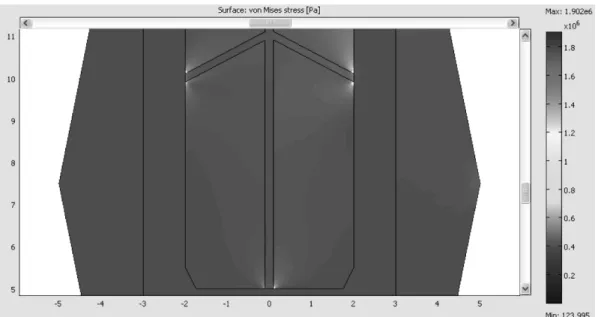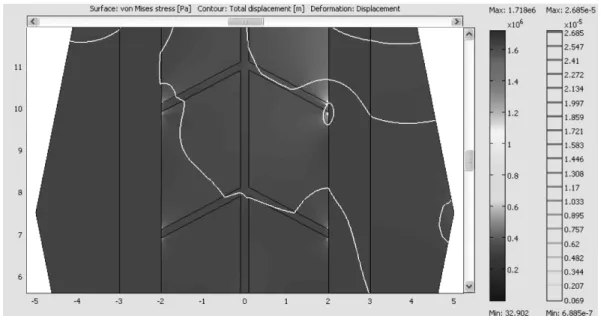http://dx.doi.org/10.6111/JKCGCT.2013.23.2.76
Design optimization of the outlet holes for bone crystal growing with bio- active materials in dental implants: Part II. number and shapes
Kangsoo Lee, Geug Tae Kim* and Yong Keun Lee**
,†Department of Advanced Materials Engineering, Kyonggi University, Suwon 443-760, Korea
*Department of Nano-bio Chemical Engineering, Hannam University, Daejeon 305-811, Korea
**Graduate School of NID Fusion Technology, Seoul National University of Science and Technology, Seoul 139-743, Korea (Received January 21, 2013)
(Revised March 11, 2013) (Accepted March 22, 2013)
Abstract For further improvement of osseo-integration of bone crystal with a dental implant, a design optimization study is carried out for various holes inside its body to deliver bioactive materials and the effect of bioactive material injection on the bone crystal growing. When bioactive material is absorbed, the bone crystal can grow into holes, which would increase the strength of implant bonding as well as a surface integration. The stress concentrations near the uppermost outlet holes were reduced with increasing the number of outlet holes. A design improvement in the uppermost outlet was shown to be effective in reducing the stress concentration. For design parameters under consideration in this study, total area of outlet of 6.38 mm
2and maximum stress of 1.114 MPa, which corresponds to type 6-C. It is due to the minimization of maximum stress and total area of outlet. The design of the outlet facing down was more effective in reducing the maximum stress value compared with a horizontal symmetry.
Key words Bone crystal, Dental implant, Finite element, Bioactive material, Outlet holes
1. Introduction
A dental implant is an artificial tooth root used in dentistry to support restorations that resemble a tooth or group of teeth [1]. Dental implants can be used to sup- port a number of dental prostheses, including crowns, implant-supported bridges or dentures [2-4]. It is neces- sary to lengthen the lifetime of implants and to acceler- ate the formation process of the bone materials. Until now, there is little research on the improvement of the initial anchorage of the implant as well as the preserva- tion of the strength of the bone materials to implant interface. Moreover, the previous results are not satisfac- tory and further technical studies are required. In general, the bone crystal obtained from carbonated hydroxyapa- tite with lower crystallinity make globular and plate structures distributed among the collagen fibrils of bone, and then relatively large structure [5].
The encapsulated biological agents are loaded into hollow and porous implants, and promote the formation of bone materials or tooth structures. A combination of porosity and controlled release techniques produces a
novel dental and/or orthopedic implant system which accelerates bone materials and osseo-integration (inte- gration of titanium into host bone materials or teeth).
The technology of controlled release delivers scheduled doses of formation factors and/or other chemical and/or pharmacological substances in a pre-defined temporal and spatial manner to promote bone material and/or osseo- integration. The physical signs of the pores and hollow cylinder can be altered to optimize bone materials and/
or osseo-integration.
A majority of dental implants currently available are in shape like small screws, with either tapered or paral- lel sides. They can be placed simultaneously as a tooth is removed by engaging with the bone materials of the socket wall and sometimes also with the bone materials beyond the tip of the socket. Recent research shows that implants placed straight into an extraction socket have comparable success rates to those placed into healed bone materials [6, 9]. The radiographic results of imme- diate restorations of dental implants placed in fresh extraction sockets, for the temporary crowns placed at the same time, have been shown to be comparable to those obtained with delayed loading, for the crowns placed weeks or months later, in carefully selected cases [7].
A typical implant consists of a titanium screw resem-
†
Corresponding author
†
Tel: +82-2-970-6594
†
H.P.: +82-10-6714-3380
†

